Published on: 10/21/2022
There’s nothing like the exhilaration of finishing a cold weather run. And breathing in the brisk air or making the first footsteps on freshly fallen snow makes a person feel alive.
Keep reading if heading out for a run on a dark, cold morning doesn’t sound appealing. Because with the proper gear, a little motivation, and the following tips, you can learn to enjoy running and training all winter long.
We’ve put together some practical considerations to help you before you head out the door for a winter run. These tips will help you understand how to start running in the winter.
Good Reasons to Run in the Winter

Are you thinking there’s no good reason anyone would run outside when the temps dip? Here are five:
- First of all, running in winter is a challenge many people don’t take on. You can feel a sense of pride being a winter runner.
- One of the biggest benefits of winter running is that it can make you a better runner. Running year-round will help you stay consistent and keep up a base level of fitness. Then when it’s time to start training for a spring or fall race, you won’t be starting from scratch.
- Winter running can also keep you accountable and motivated during the winter, which is often an “off-season” for runners.
- Running can provide a much-needed mental health boost during those dark, dreary months. In fact, more and more research shows the positive effect running has on mental health (1).
- Finally, think about your favorite trails and paths that get congested with runners, walkers, and cyclists in the summer. Good news: they’ll likely be less crowded in the winter since many runners opt to take the season off or hit the treadmill.
How Does Running in the Winter Differ from Running in Spring/Summer
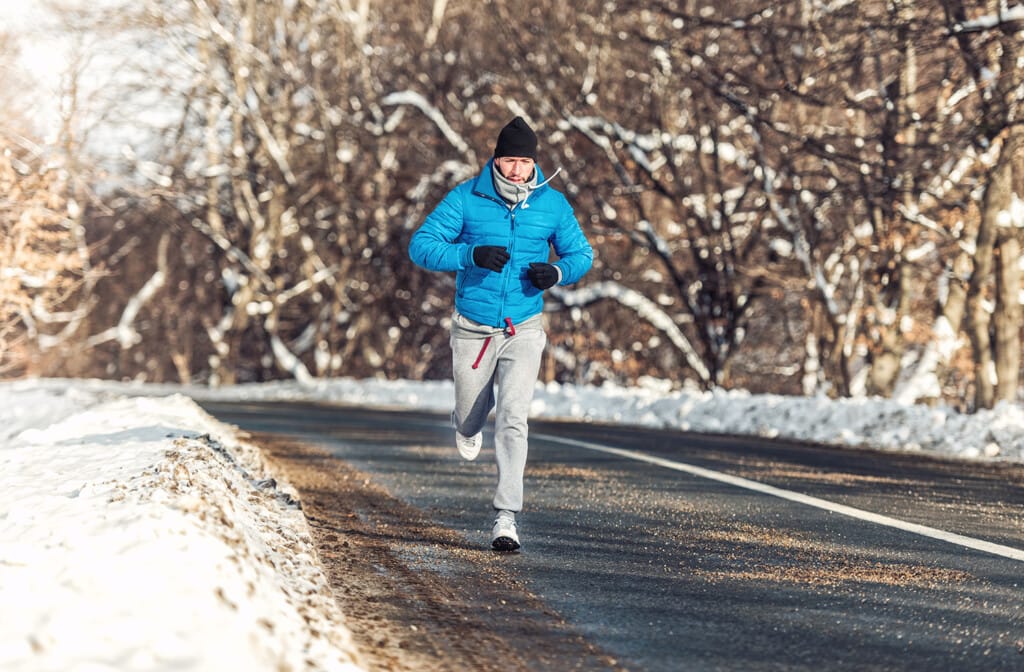
If you’re new to winter running, you’ll want to make a few changes to your spring and summer running routine.
Don’t Skip Your Warmup
If you don’t normally take time for a pre-run warm-up in the spring and summer months, make sure it’s a priority before every winter run. It will help warm your muscles and loosen joints that might feel stiff from the cold.
It doesn’t take much – just a few jumping jacks, arm circles, or squats to get your body moving, your blood flowing, and your heart rate up. Then when you start running, do a slow jog or even a brisk walk for the first 5-10 minutes.
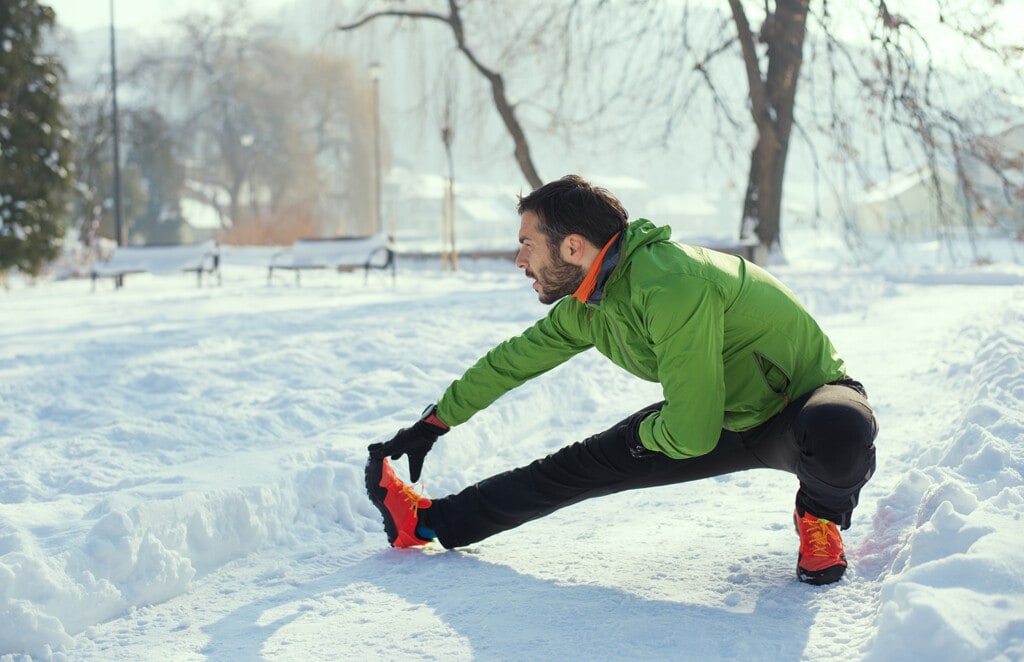
Adjust Your Pace and Mileage
During warmer seasons, it’s common to focus on race training. Unless you’ve planned a winter race, the cold months are the perfect time to focus on your running form without worrying about speed or high mileage.
Since winter running requires a balance between keeping yourself warm without getting sweaty, runners often train differently in winter than in summer. They may save the speed work for warmer months and focus on easy maintenance miles in the colder months. Or, they may just run fewer miles. Choose your strategy, but keep in mind that if you start overheating, you can always run slower until you cool down.
Watch Your Step

You might be used to running during a spring rain shower, but running on ice can be dangerous. Ideally, you could wait until the ice melts or run in the grass or trails instead of on the pavement. If your shoes need extra traction in the snow, you can add a traction device to the outside of them.
Don’t Forget to Hydrate

It’s easy to remember to drink water or electrolytes during a hot run, but in the winter, you may not feel as thirsty. Even if you slow your speed, you’ll still need to hydrate during your workout. Consider drinking on a schedule if you find it hard to remember to drink.
Re-Evaluate Your Schedule
Just as you might run early in the morning to avoid the hottest part of the day during summer, consider scheduling your winter runs around the weather. If temperatures are especially cold, run in the warmest part of the day if possible, especially if the sun will be out. Or, consider splitting your run into two shorter ones to limit your time in the cold temperatures.
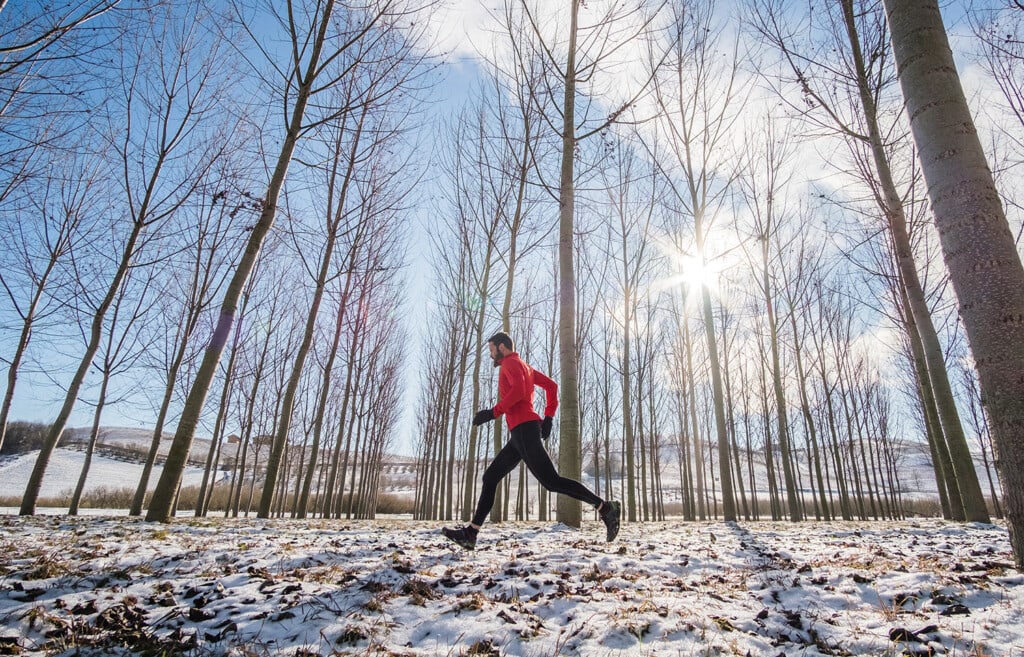
Change Right After Your Run
In the summer, you might run errands before going home to shower and change after a run. In the winter, you’ll want to get out of your sweaty running clothes as soon as possible to avoid getting chilled.
If you have plans after your run, bring a change of clothes, including a dry sports bra for women. And if possible, drink something hot like soup, hot tea or coffee to help keep your body temperature up.
Practical Tips to Enjoy the Experience
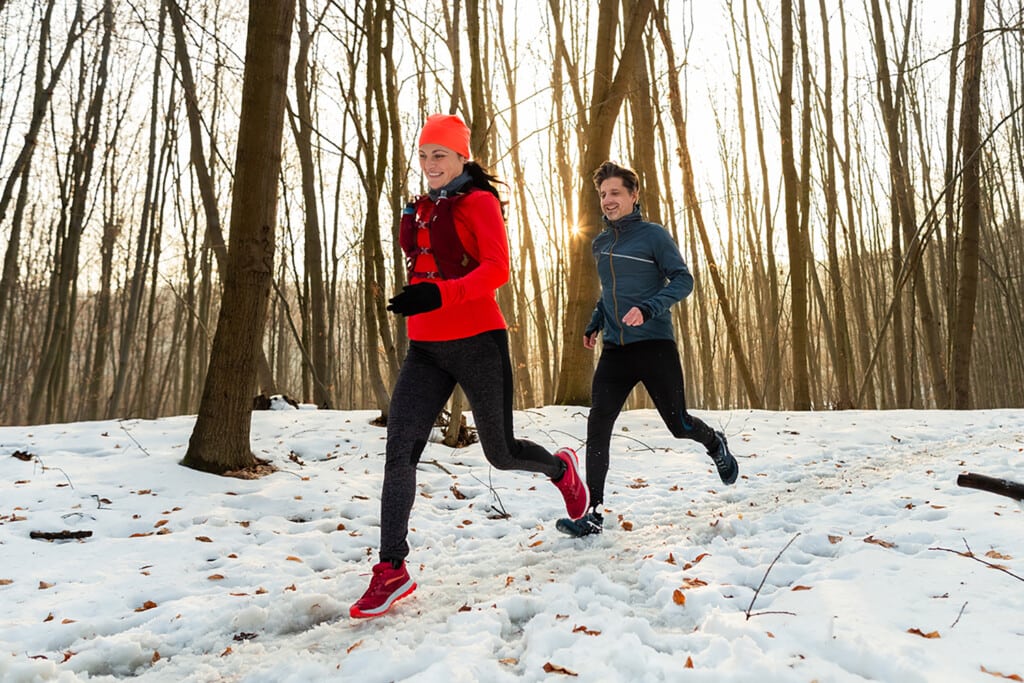
Find Strength in Numbers
Joining a running group may motivate you to get out the door on cold days. Similarly. if you plan to meet up with friends, you’ll be less likely to skip your run because someone is counting on you.
Motivate Yourself with a Reward
Like with any run, sometimes the hardest part of cold weather running is getting yourself out the door. Make a plan to reward yourself after your run with a treat like pancakes, special coffee or brunch with friends.

If you’re running alone, you can tell yourself that you’ll turn around and go back into the house after five minutes if the weather is really bad. Most of the time, once you get started running in the cold, you’ll keep going.
Wear the Right Running Gear
Dressing for winter running can be tricky because you don’t want to end up wearing sweat-soaked clothes when it’s freezing outside. Investing in technical gear will allow you to wear breathable layers that trap heat instead of sweat. This way, you can keep your core temperature up without overheating. Look for man-made fabrics like nylon, or merino wool, which is a quick-drying natural fabric.
A good rule of thumb is to dress for a temperature about 10 degrees warmer than the actual temperature. You want to feel a bit chilly when you start because you’ll quickly warm up as you run.
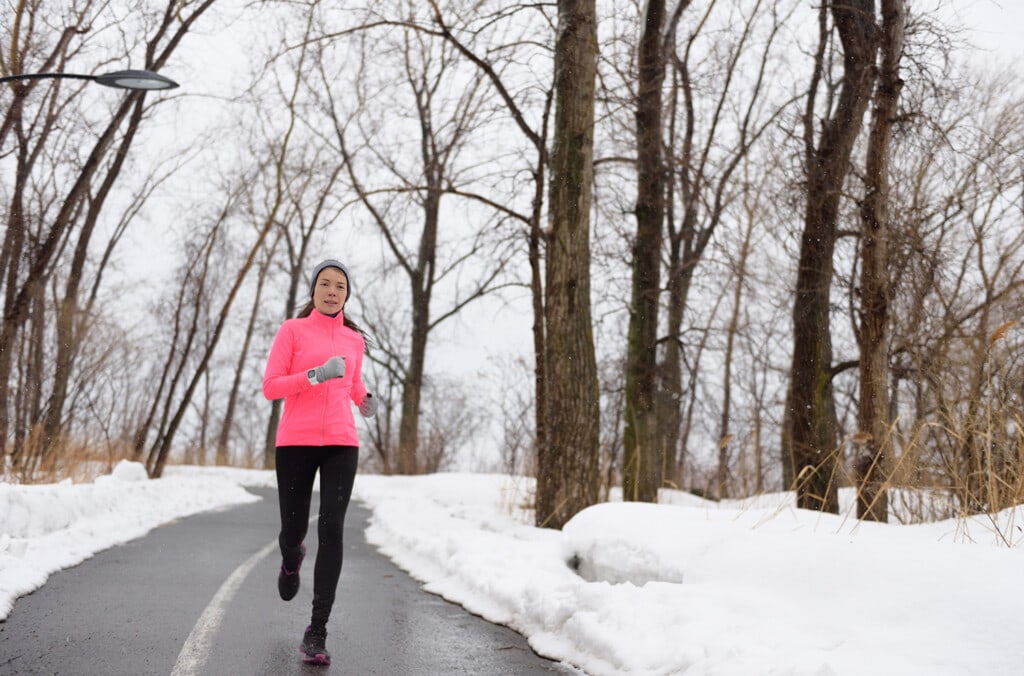
Base Layer
Start with a sweat-wicking base layer to keep you dry and trap body heat. This is usually a thinner layer that fits close to the body. That will make it easier to add more layers without feeling too bulky.
Mid-Weight Layer
Next, use a thermal layer for warmth. If possible, choose one with zippers at the neck and underarms. You’ll be able to open them up and get some ventilation if you get too hot as you’re running.
Outer Layer
Top it off with a wind or rain-resistant jacket if it’s going to be windy, or a rain jacket if you expect snow or sleet.
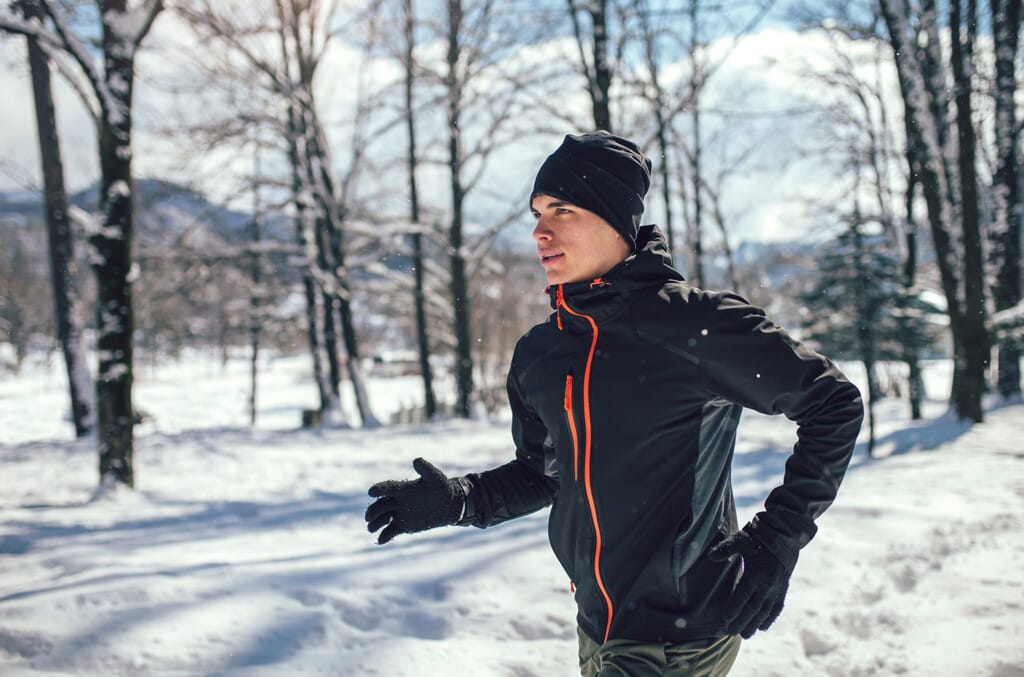
Pants
Keep your legs warm with thermal running tights. Some runners add a warm undergarment to protect from the cold weather. You can add windproof pants over your tights if it’s extremely cold or windy.
Protect Your Skin
In subzero temperatures, you’ll want to cover any exposed skin. Wearing gloves or mittens will protect your hands and a buff or balaclava will protect your face and neck. If it’s really cold outside, you could even put hand warmers in your gloves for added heat.
Cover Your Head
Use a hat to trap body heat and/or ear warmers to prevent frostbite. If you get too warm, it’s handy to have pockets to stash your hat and gloves.
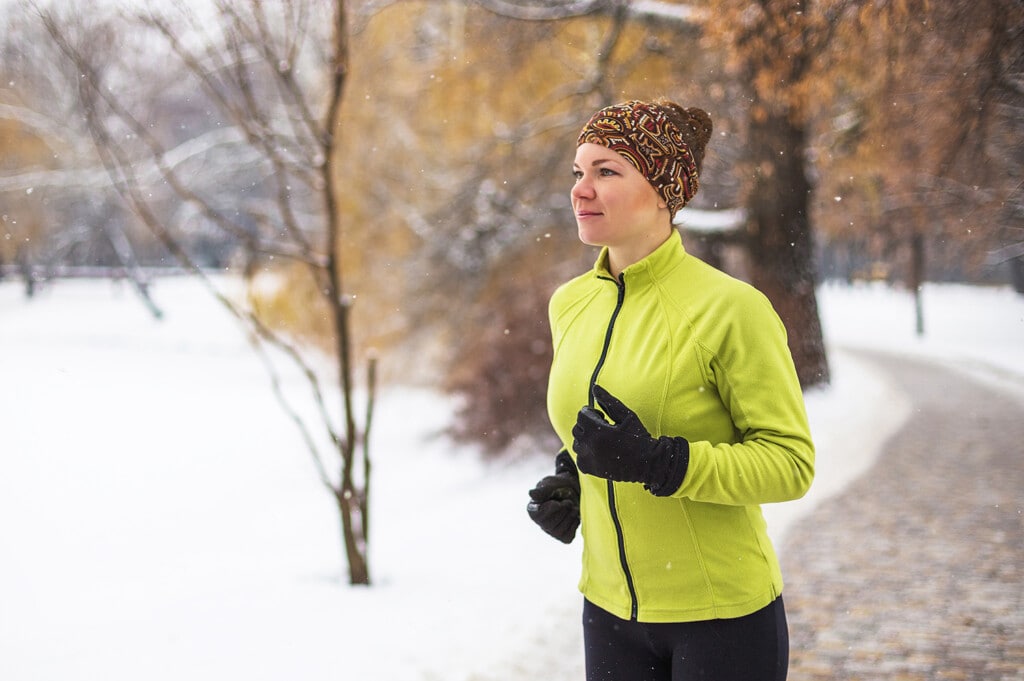
Shoes
Don’t forget about your feet. Wool running socks will keep your feet warm and dry, but wearing running shoes with a lot of mesh will allow cold air and moisture in. Instead, choose good winter trail shoes with uppers that don’t have very much mesh. Better yet, wear shoes with Gore-Tex uppers to keep out snow and slush while keeping warmth in.
Everyone has their own comfort level when running in colder weather, so the more you do it, the more you’ll figure out what works for you. Most runners have go-to shirts, jackets, pants, and gloves they use for winter runs. Start with a few basic pieces and then build up your cold-weather running wardrobe as you figure out what you like.
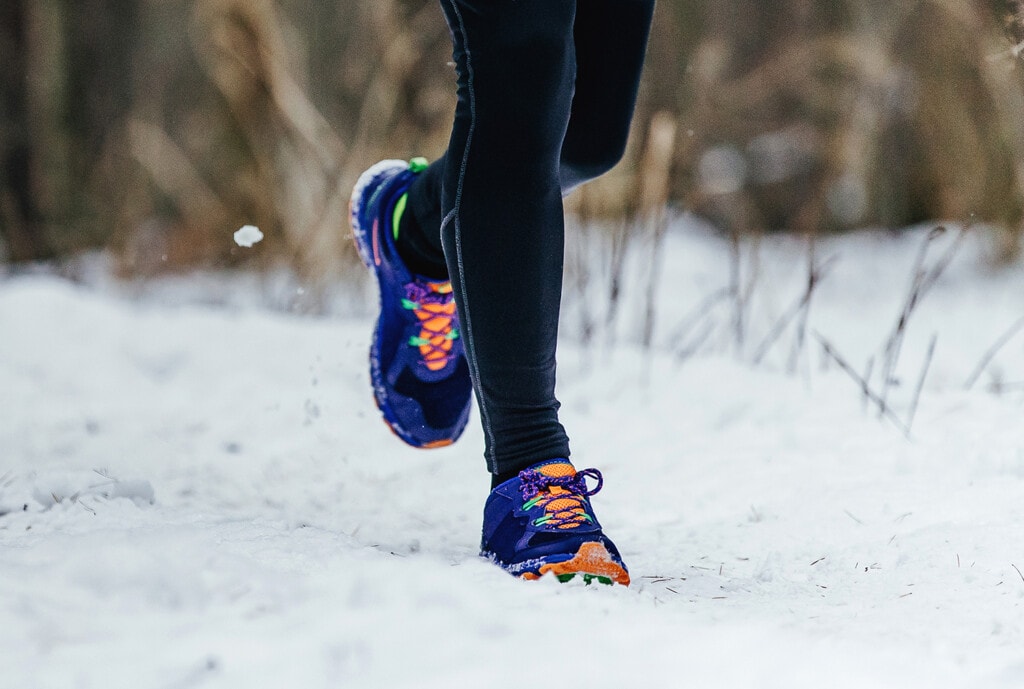
Stay Safe
Make sure you check the forecast before heading out the door. If inclement weather is expected during your run, you might need to take an extra layer. And if there’s ice or slush on the roads or sidewalks, you may need to add traction to your running shoes to avoid slipping.
Also, keep in mind that it gets dark earlier in winter. Make sure you have a headlamp so you can see where you’re going. And don’t forget to wear reflective clothing, so you’re visible to cars.
Plan for Wind
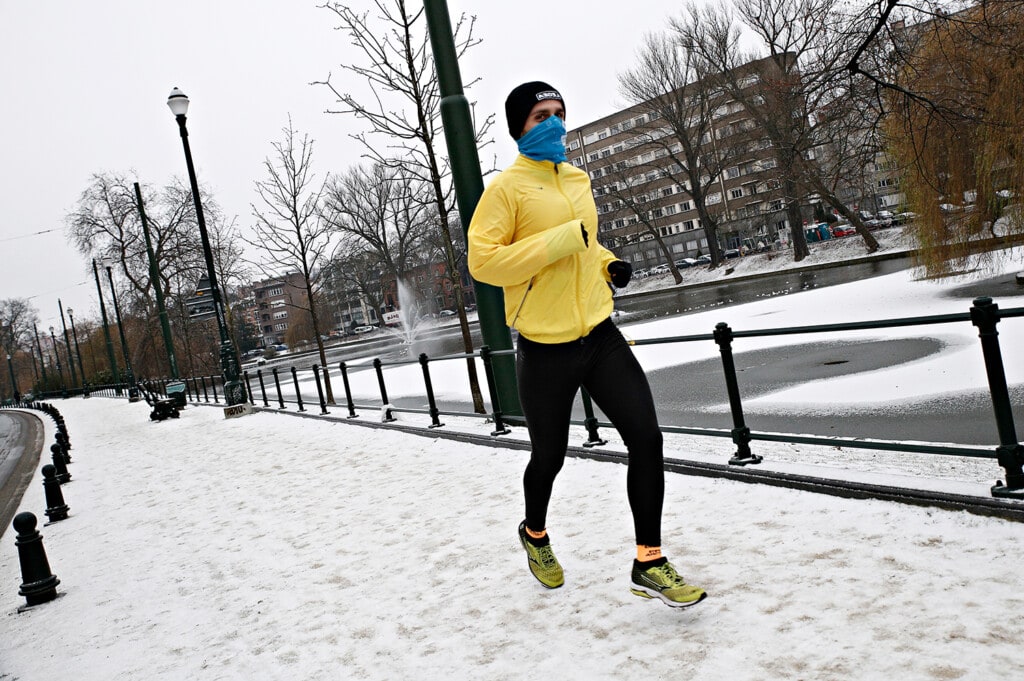
If it’s windy, start out running into the wind if possible. You’ll get sweaty when the wind is at your back, so try to save that for the end of your run if possible. Or better yet, run loops, so the wind isn’t constantly at your back, heating you up.
Remember, freezing wind can be dangerous to exposed skin, especially on the face. Consider a full face mask or cover your skin with a protectant like Vaseline or BodyGlide to prevent windburn and frostbite.
Give It a Try
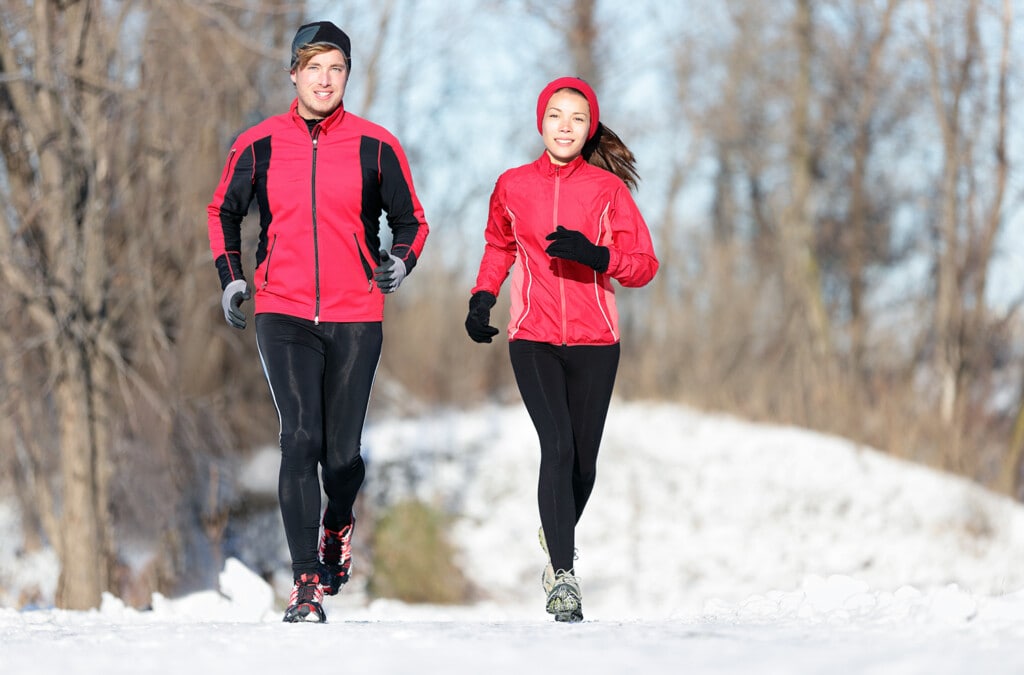
Ready to start running in the winter? You might find winter running quite enjoyable with the right gear, a good warmup, and a positive mindset. And remember: just like running in warm weather, the more you run in the cold, the easier it will get. So go ahead – make this the year you start winter running!
References
Systematic Review of Psychological and Behavioral Correlates of Recreational Running
Hugo Vieira Pereira et al. (2021)
Frontiers in Psychology
https://www.frontiersin.org/articles/10.3389/fpsyg.2021.624783/full

